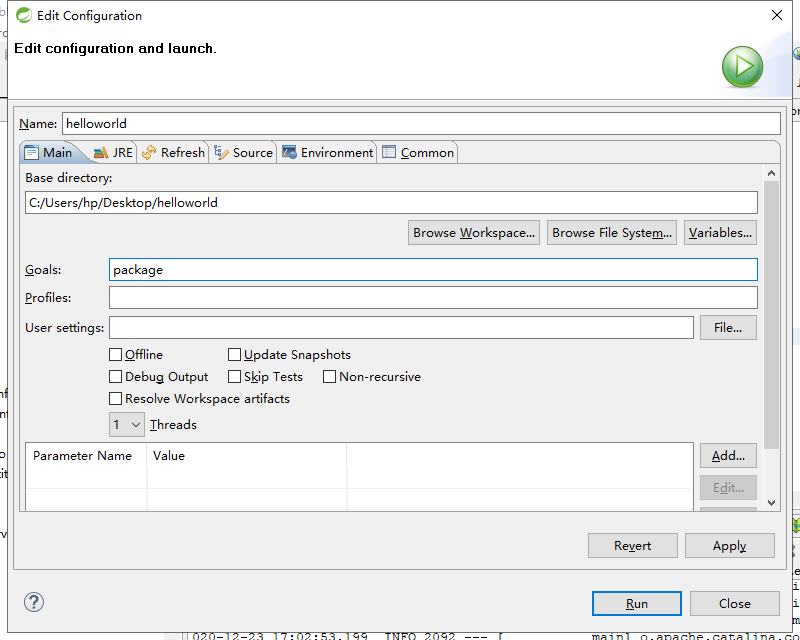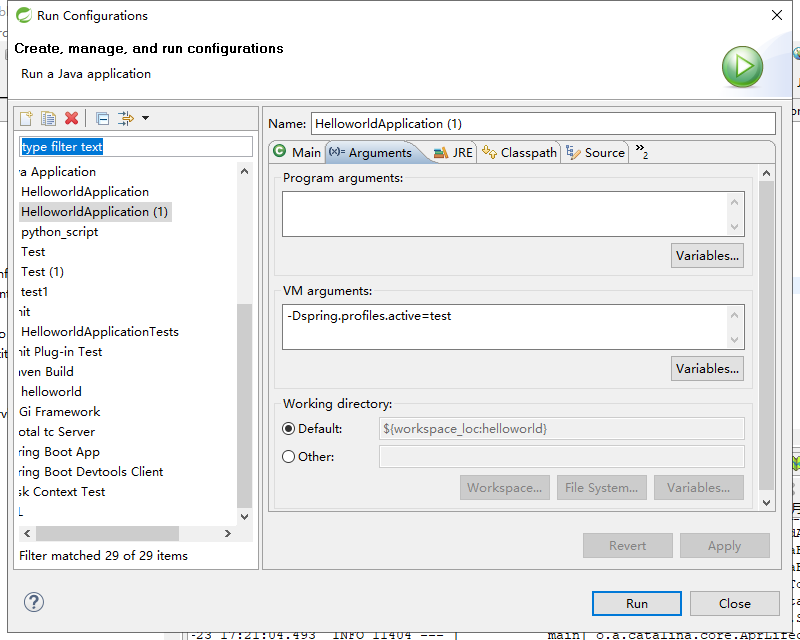一、使用properties设置多环境
创建多个properties文件;
application-dev.properties:(开发环境)
server.port=8883
application-test.properties:(测试环境)
server.port=8884
appliction.properties:(主环境)
server.port=8882
运行主程序:

可以看出来运行的是主配置文件appliction.properties。那么如果想运行开发环境文件。
在主配置文件中加入:
spring.profiles.active=dev
则运行配置文件application-dev.properties。
二、使用yml文件设置多环境配置
在yml文件中添加:
server: port: 8883 --- server: port: 8884 spring: profiles: dev --- server: port: 8885 spring: profiles: test
这样运行主程序运行的还是8883端口。
更改yml文件:
server:
port: 8883
spring:
profiles:
active: dev
---
server:
port: 8884
spring:
profiles: dev
---
server:
port: 8885
spring:
profiles: test
运行的就是dev环境配置。
注意:如果使用yml文件进行配置,一定要把在properties文件的相关配置注释掉。因为properties文件优先级高于yml文件。
三、动态切换环境:
i:更改运行参数,在run configurations中。点击arguments ,在 program argument输入
--spring.profiles.active=dev
run。
ii:命令行方式
右击项目:run as->maven build...

run。(在这里我出现了问题呜呜呜呜)
iii:通过vm参数指定环境:
